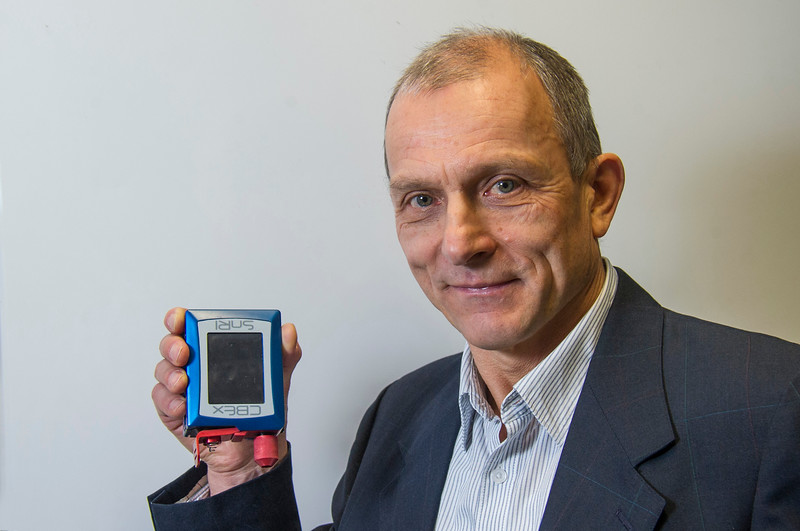ALBANY, N.Y. (May 12, 2020) – Igor Lednev’s innovative laser-light technology is adding another use to its forensics toolbox – being able to determine if a smoker was at the crime scene based on biological evidence.
In a new proof-of-concept study, Lednev, a professor in the Department of Chemistry at the University at Albany, in collaboration with a team of forensic scientists, used Raman spectroscopy, coupled with advanced machine learning methods, to prove with 100 percent accuracy if a dry oral fluid sample belongs to someone who smokes regularly or does not smoke at all.
Raman spectroscopy is a technique that shines a monochromatic light (i.e. from a laser) on a sample and measures the intensity of scattered light. No two samples will produce the same Raman spectrum, offering a unique measurement that is similar to a fingerprint. Results are instantaneous and nondestructive, preserving the sample for future testing.
Lednev’s findings add to nearly a decade of research using his patented technology.
“Differentiating smokers and nonsmokers is a significant expansion to our already established suite of identifiable characteristics,” Lednev said. “Our goal is to help crime science investigators (CSIs) build a phenotype profile for suspects in the early stages of an investigation. A CSI would, of course, prefer to build a DNA profile. But, that is often not an option. We offer a viable alternative.”
Laser Focused
In previous research, Lednev has successfully identified a number of key characteristics from physical evidence (such as blood, saliva and sweat) including the type of body fluid, time since deposition, and the race, sex and age group of the donor.
This latest study analyzed a total of 32 oral fluid samples that were collected from donors of differing gender, age and race. Half of the samples (16 men, 16 women) reported smoking regularly. The other half reported they had never smoked.
According to Lednev, pure cotinine, which is the main metabolite of nicotine, shows a “spectroscopic” signature within oral fluid. When combining the Raman spectra reading with a complex genetic algorithm, developed by Lednev and his team, the researchers could differentiate all smoker and non-smoker samples.
Results were published in the Journal of Biophotonics. Collaborators included Entesar Al-Hetlani and Mohamed O. Amin of Kuwait University and UAlbany graduate assistant Lenka Halamková.
“We are excited with this new finding, but more research needs to be done,” said Lednev. “Our next step is to significantly increase the number and variety of donors. It is also important to rule out potential interfering factors such as medical conditions and illnesses, and consumption of food and drinks before or when the oral fluid is deposited.”
The Lednev lab has been funded by the National Institute of Justice (NIJ) for 11 consecutive years for a total of over $3 million. His team has published over 60 articles in peer-reviewed journals over the past decade and received three U.S. patents.
About the University at Albany
A comprehensive public research university, the University at Albany-SUNY offers more than 120 undergraduate majors and minors and 125 master’s, doctoral, and graduate certificate programs. UAlbany is a leader among all New York State colleges and universities in such diverse fields as atmospheric and environmental sciences, business, public health, health sciences, criminal justice, emergency preparedness, engineering and applied sciences, informatics, public administration, social welfare, and sociology taught by an extensive roster of faculty experts. It also offers expanded academic and research opportunities for students through an affiliation with Albany Law School. With a curriculum enhanced by 600 study-abroad opportunities, UAlbany launches great careers.
###
Original post https://alertarticles.info
